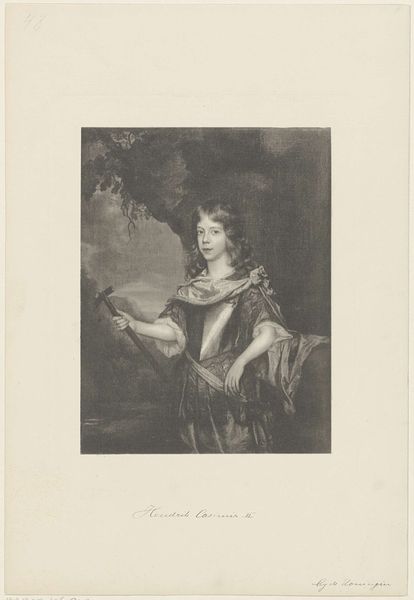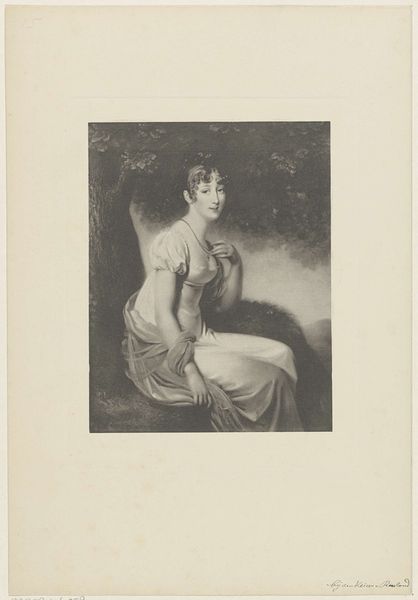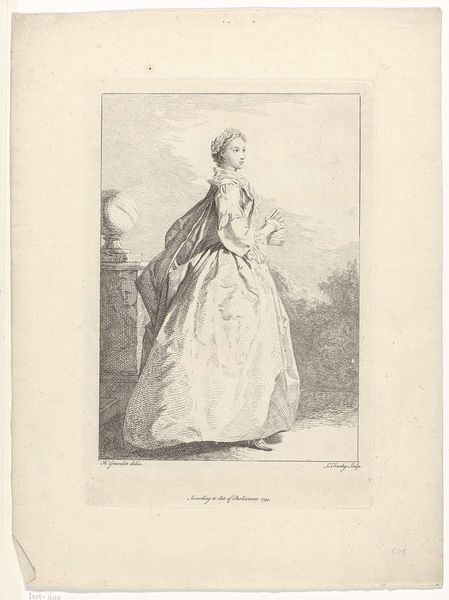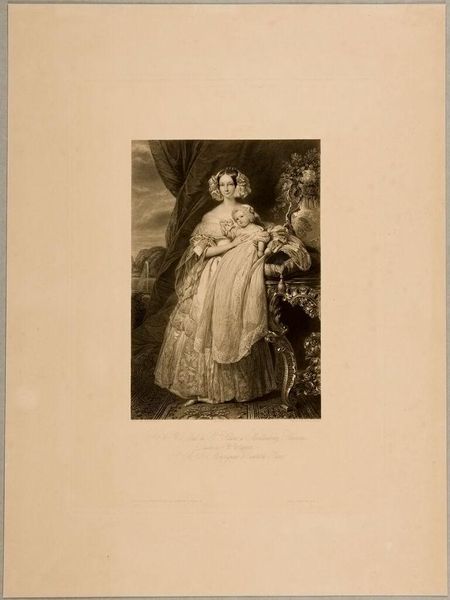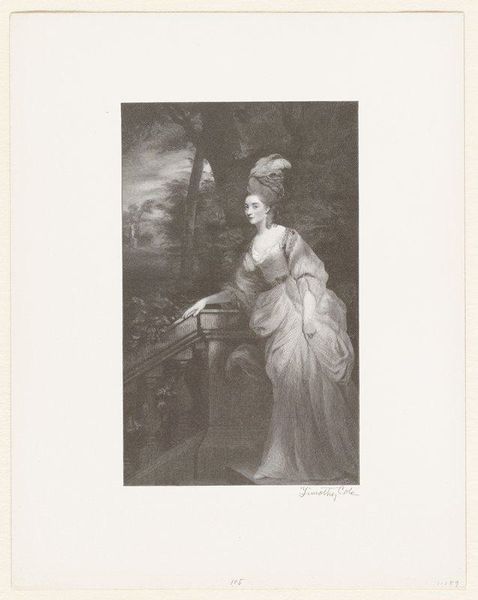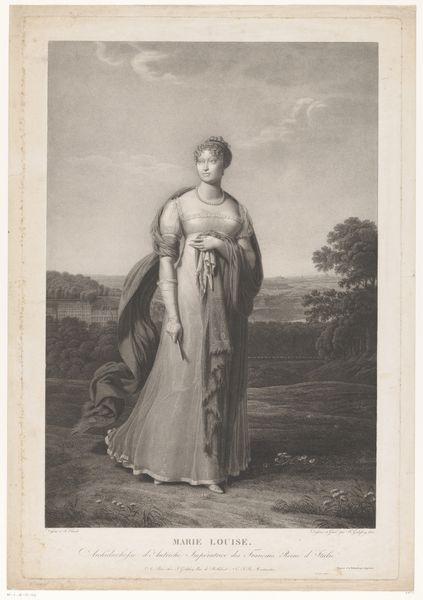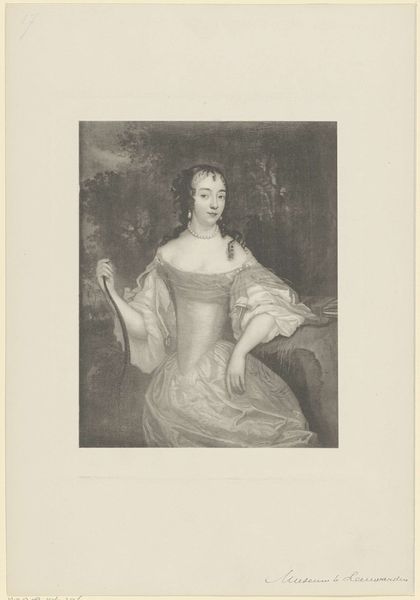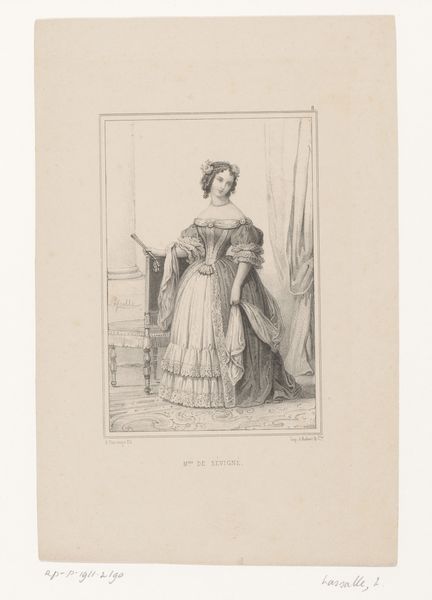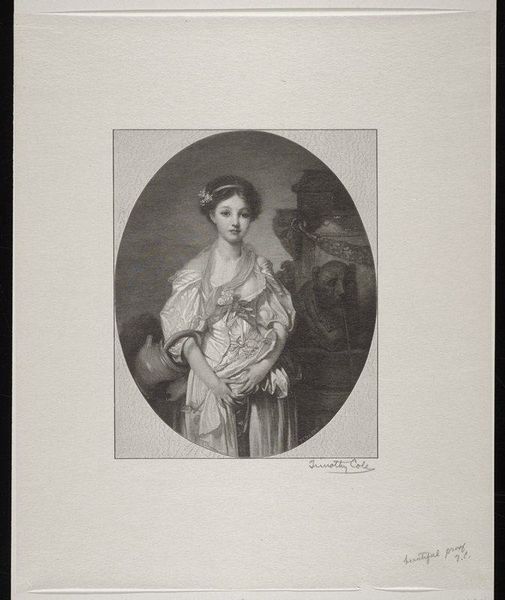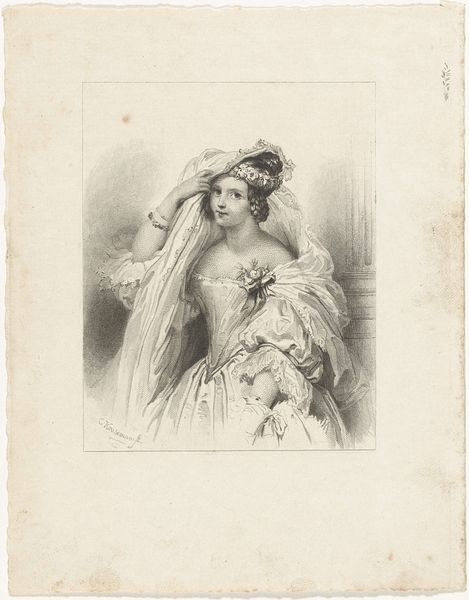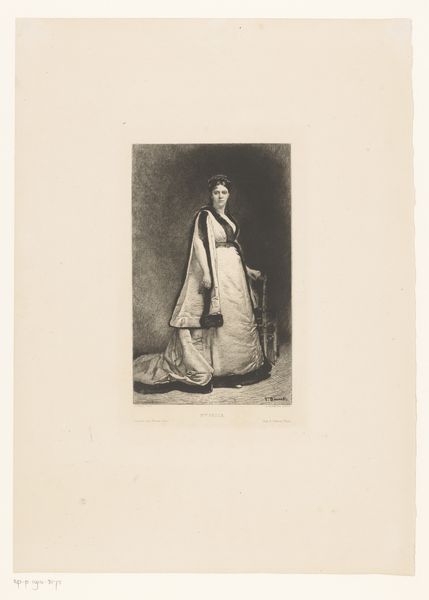
Dimensions: height 235 mm, width 178 mm
Copyright: Rijks Museum: Open Domain
This portrait of Marianne, Princess of the Netherlands, was created by an anonymous artist through lithography. This printmaking technique, developed in the late 18th century, uses a flat stone or metal plate on which an image is drawn with a greasy substance. The plate is then treated so that the ink adheres only to the drawn areas, allowing the image to be transferred to paper. The process of lithography allowed for the relatively quick reproduction of images, making them more accessible to a wider audience. In this portrait, the lithographic process captures the textures and details of the princess's dress. The artist’s choice of lithography reflects the changing landscape of art production in the 19th century, where printmaking played an important role in disseminating images and shaping public perceptions. Considering the social and cultural implications of the lithographic process, we can appreciate how materials and making contribute to the meaning and significance of the artwork, challenging the traditional boundaries between fine art and craft.
Comments
No comments
Be the first to comment and join the conversation on the ultimate creative platform.
